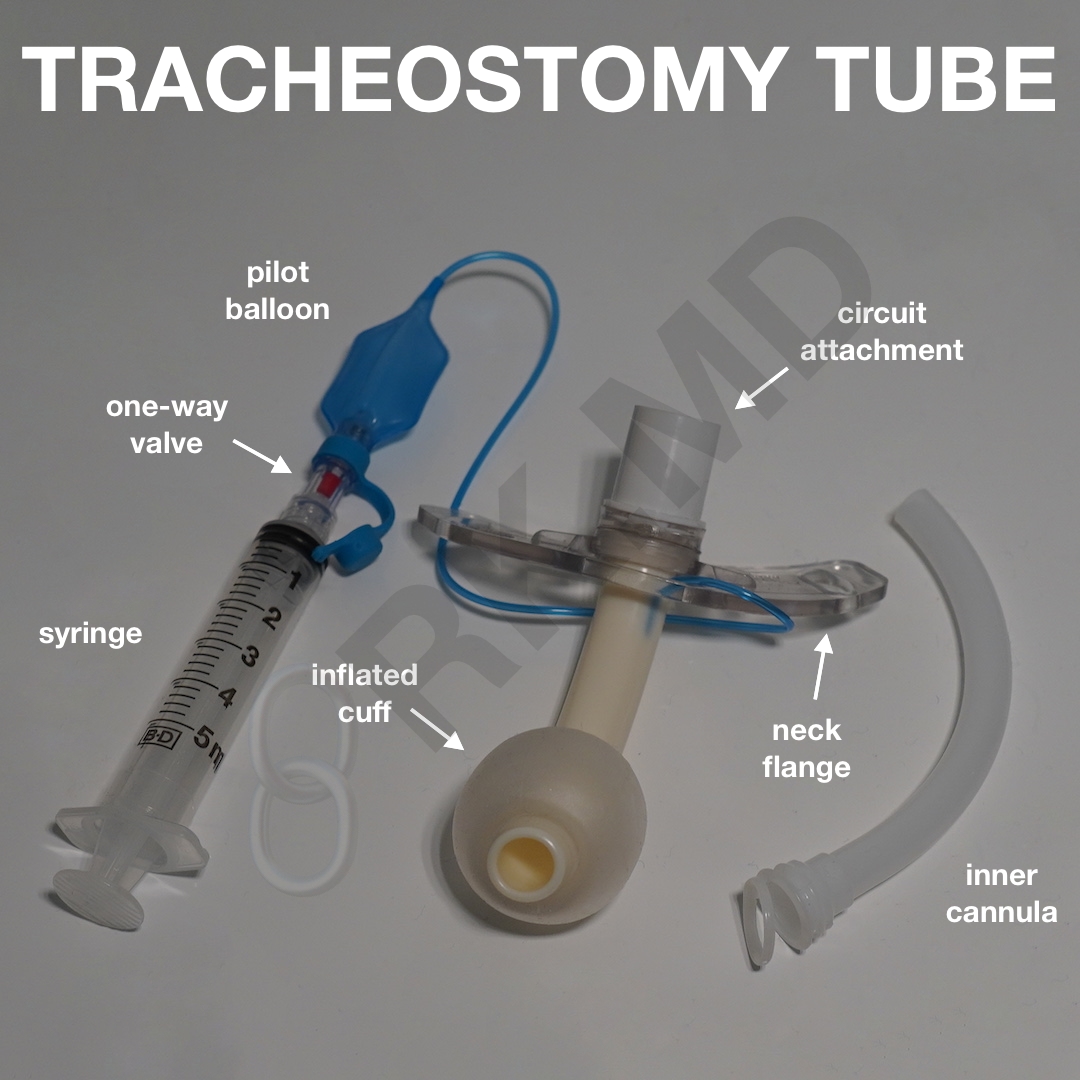The COVID-19 era has forced many healthcare workers with no prior experience regarding tracheostomy tubes (“trachs”) to learn how to handle them. These airways can be placed surgically or percutaneously at the bedside. In either case, the tubes are secured using ties and/or sutures for at least the first week (“fresh trach precautions”); however, they can inadvertently become dislodged and fall out. So what do you do?
If the patient has a chronic trach, the tract likely has granulated well enough to replace the tube. I usually use an obturator (not pictured) or lubricated bougie/Cook catheter, manually open the stoma with my fingertip, pass the airway catheter, and then thread the trach tube over. I have the curved portion face posteriorly and rotate it anteriorly as soon as it’s pushed into the airway.
Suppose the trach is fresh and the patient is rapidly decompensating after dislodgment. In that case, I’ll cover the tracheostomy stoma with a large Tegaderm, mask ventilate the patient with an AMBU bag, and proceed to orally/nasally intubate the trachea if indicated. If the patient is stable, I’ll use a bronchoscope to advance a tracheostomy tube into the airway with visual confirmation that I am indeed in the airway. This is the key! Blindly replacing a trach with a fresh tract can create a false lumen where the trach tube is between fascial/muscle layers instead of the airway resulting in massive subcutaneous emphysema and hypoxia/hypercarbia. Call for help if needed!
Drop me a comment below with your experiences regarding dislodged tracheostomy tubes!







Hey Mark, admittedly that’s not the patient population I deal with, but your approach sounds practical for long surgeries in the prone position.
Rishi what do you do for trached (2 week old) patients in long prone spine surgeries. I’ve orally intubated these patients with good results and just hook them back up to their trachs post op.